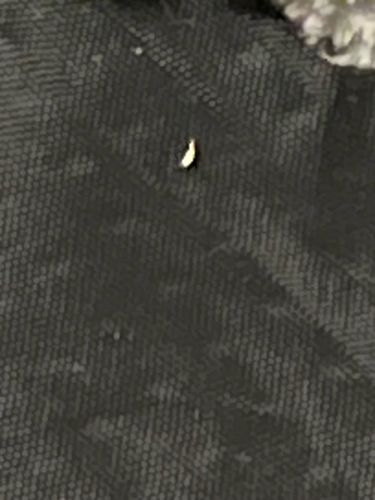Case-bearing Clothes Moth Larva
Scientific Name: Tinea pellionella
Order & Family: Lepidoptera (moths and butterflies), Tineidae (fungus moths and clothes moths)
Size: Larvae are typically 10-14 mm (0.4-0.55 inches) long when fully grown.

Natural Habitat
Indoors, typically in dark, undisturbed areas such as closets, attics, storage chests, and behind furniture. They feed on natural fibers.
Diet & Feeding
Keratin-containing materials, including wool, fur, silk, feathers, felt, and sometimes synthetic blends if mixed with natural fibers. They also feed on lint, dust, and hair.
Behavior Patterns
The larva builds and lives within a silken case, which it carries everywhere it goes. The case is camouflaged with bits of the material it is feeding on. They are slow-moving and prefer dark, secluded places. The adult moth is small and prefers to run or hop rather than fly, especially in bright light.
Risks & Benefits
Potential risks include significant damage to textiles, clothing, carpets, and other stored natural fiber items. They are considered a common household pest. There are no known benefits.
Identified on: 10/10/2025